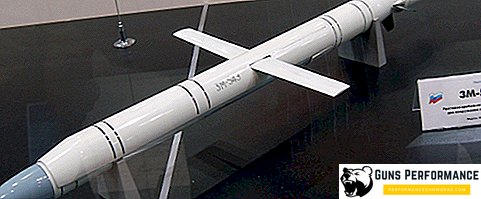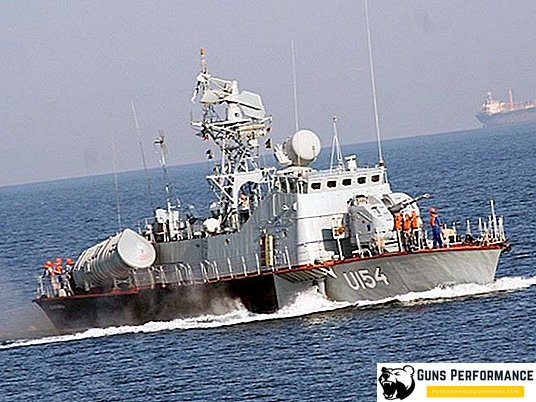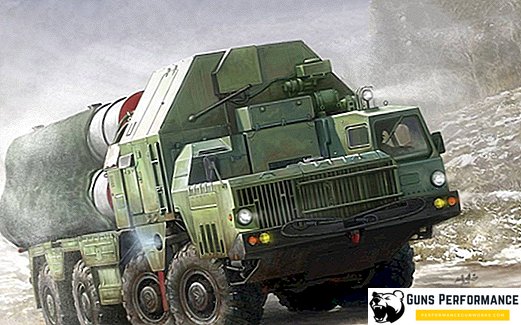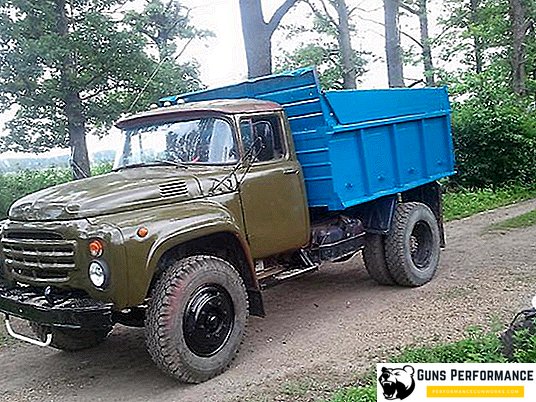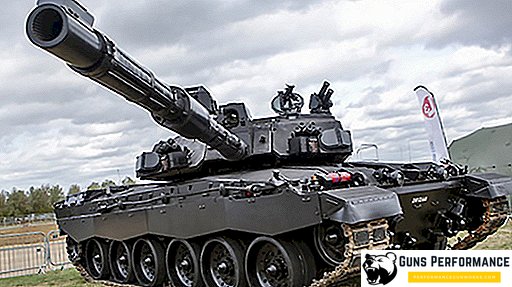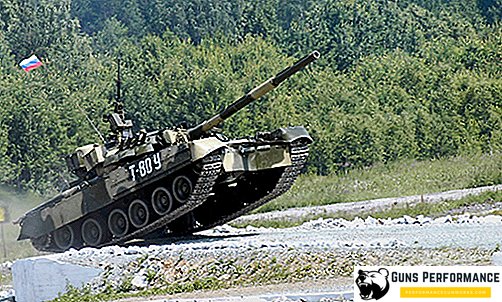The Finnish knife is a legendary cold weapon, which is a frequent attribute of military and detective novels, a frequent visitor in the news bulletins of the crime chronicle. Despite the name and pedigree, the knife can rightly be called a domestic invention. The breadth of using Finnish knives is striking. The weapon is common among hunters and is included in the arsenal of special forces soldiers. Do not forget that these knives still remain the favorite weapon in the criminal world. The reason for such unfading popularity lies in the high combat and tactical qualities of the Fink.
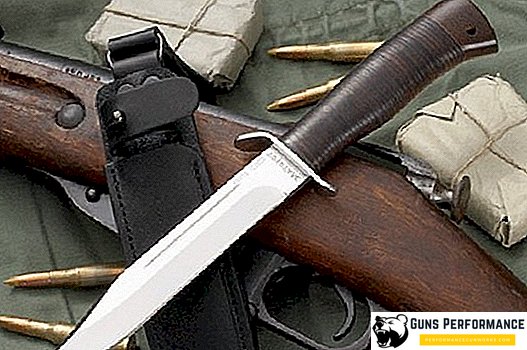
The appearance, shape of the knife and the size of formed over the centuries. Account was taken of the experience of using cold weapons in hunting and in combat conditions. As a result, gunsmiths managed to create an almost ideal weapon for self-defense, the qualities of which continued to be polished already in use.
Origin of the finca
Despite the fact that the Finn is a traditional domestic type of cold arms, Finnish craftsmen are still considered the ancestors of the knife. The popularity of the knife in Russia is explained by the fact that Finland has long been considered a part of the Russian Empire. Many Finnish traditions, including those in the arms field, are widely spread in Russia. The prototype of this weapon can be considered a traditional Finnish hunting knife "puukko", which was successfully used in the economy and in the field. For hunters and fishermen such a knife was a must in the arsenal. The proliferation of knives of this type contributed to their simple design and versatility.
The name is most likely collective. Translated from the Finnish "puu" means "tree", but the second part of the word - "pook" in one of the German dialects means a knife. Traditionally, the Finnish knife is considered a handmade product. He had a small sharp straight blade with valleys. The thick butt and massive handle provided a comfortable grip and effective use of the knife.

Finnish gunsmiths continue today to produce exclusive products that have retained their original shape, size and quality. Most of the knife versions that appeared later became modernized and improved versions of this knife. The most widespread is the Russian version. First, in the Russian Empire, and later in the USSR, knives of this type began to be widely used as military weapons. The main domestic version was the knife of the NKVD - combat special equipment. In the future, on the basis of this modification, an army version was developed and created - the HP-40 knife, which entered service with the Red Army.
Design features
For any melee weapons, the main characteristic is the effectiveness of practical use. Fink is exactly the weapon that can be both effective in combat and useful in everyday life. The blade in the traditional Finnish version has a small length and is pointed on one side. However, this blade length makes it easy to use a knife for cutting branches and sharpening stakes. The tool is very convenient as a kitchen utensil and can be used for cutting game. The blade is equipped with a thick butt that allows you to apply additional physical force. A block or handle of a finca is able to withstand a blow with a log or hammer on the butt.
In most common variants, the blades of Finnish knives have a length of 125 mm. The width of the blade does not exceed 20 mm. The thickness of steel, as a rule, is not less than 4 mm. Such parameters make the knife resistant to mechanical stress. The cutting edge of the blade is only on one side. On the blade on both sides there are longitudinal valleys. Unlike other hunting and combat knives, Finnish products have a heel in front of the guard. In this place there is no sharpening, which is caused by the peculiarity of the practical use of the knife. In some grips, the index finger rests on the blade, thereby controlling the direction of the cut.

For the manufacture of knives is usually used gun steel with a hardness of 58 units on the Rockwell scale. A Finnish hunting knife, made according to traditional old technology by Finnish blacksmiths, is made of a worn spit. The metal in this case is soft and ductile, amenable to cold forging. The manufacturing techniques of traditional puukko-finnish knives were as follows:
- worn braids are collected in a package (2-3 pieces);
- during heating, the bag is forged until monolithic bars are obtained;
- ready-made bars are riveted on narrow thin metal strips;
- further pieces of steel are cut to the dimensions of the blade;
- the forging and turning of the strip under the shape of the blade and shank is carried out;
- the handle sits on the blade.
The handle is fastened with a brass fitting, blade or sleeve.
Today, for manufacturing various versions of Finnish knives, high-carbon steel is mainly used, where nickel and chromium are present as alloying additives. Nickel increases the corrosion resistance of the metal, and chromium gives the material more stability. In the old recipes for the manufacture of Finnish knives tried to use durable steel. Today, the market of cold arms is observed dominance of cheap steel grades, which are used for mass production of knives of dubious quality.
Quality steel allows the blade to keep sharpening for a long time. Proper and competent care of the blade will prevent rust.
For reference: Modern manufacturers often use stainless steel for the manufacture of Finnish knives, but the quality of sharpening such knives is significantly inferior to the original products.
The shape, size and features of the application
An important role in the effectiveness of cold weapons is played by its size and shape, and the Finn is not an exception; its design has remained unchanged and standard for many years. The length of the blade without a cover should not exceed the length of the palm of a person.
According to Finnish hunters, a large blade length does not always give the desired effect. It is much more important to know the anatomical features of a person well than to use a large and long weapon. In addition, for use in everyday life a short blade is more practical than a long blade. Finnish hunting knives have a standard length from the tip of the blade to the pad on the handle - 245 mm. The same dimensions correspond to the NKVD knives - the Russian version of this weapon.
The product has a double-sided S-shaped guard, which is the hallmark of all Finnish knives. The base of the handle can be made of wood (birch bark or birch). In modern conditions, bakelite or similar synthetic materials are used for the handle.
Some modern models have differences in the form of a blade and handle, which is the trademark of a manufacturer.

From the point of view of connoisseurs of cold arms and historians, the presence of a guard is not characteristic of a finca. The handle, in contrast to the folding knives, has a cylindrical shape, so that it is more convenient to hold a position in the palm of your hand. The shape of the handle in the finca is oval and smooth, somewhat “pot-bellied” in the middle and narrowed to both edges. Later, guards, rings and protrusions for the fingers, which play the role of fuses, were included in the design of the knives. This was due to the fact that knives of similar design began to be mass produced and manufacturers were required to ensure the safety of the consumer.
Such excesses are absent in the domestic samples of these weapons. However, the Vacha Finnish knife, which became the prototype of the NR-40 army combat knife, has a guard. The handle of the knife is equipped with steel rings and a massive metal butt.
Features of the production of Finnish knives
The shape and equipment of the knife depends largely on the place of manufacture and the scope of use. Army models had factory, artel production, whereas many models of Finnish knives, made in an artisanal way, appeared on the market. In the criminal world there were knives in circulation that had a lot of individual differences. Folding knives, which became popular after World War II among hunters, fishermen and tourists, did not always meet the requirements of exploitation. Thus, after many years, the Finn continues to be one of the most common types of knives. In Russia, the Finn has become a legendary weapon with notoriety, whereas in Finland, on the contrary, such knives continue to be the main weapon of hunters and are used as an element of military uniforms. The widespread proliferation of weapons has led to the fact that wearing a finca was considered illegal. Without the permission of the authorities it was forbidden to manufacture, sell and carry weapons of this type.
Only a number of enterprises in Russia continued the legal production of Finnish knives as combat melee weapons and tourist equipment. One of the well-known domestic brands were Finnish knives from the company "Kizlyar". The company has managed to adjust the mass production of knives in various versions, ranging from hunting modifications to knives for household use.

In the new version the knives do not fall under the prohibitions of the Ministry of Internal Affairs and can be implemented and worn in a free order. All because of the decrease in the thickness of the blade. Instead of the traditional 4 mm, on new replicas the blade of the knife has a thickness of only 2.4 mm.
Conclusion
Following the traditions, some manufacturers try to maintain the traditional size and shape of knives. The Finnish company Martini, one of the leading manufacturers of combat, sport and hunting equipment, continues to produce Finnish knives of various modifications. Her products are traditionally distinguished by high quality steel blades and excellent performance characteristics of knives. However, the majority of manufacturers in order to please the demand modifies the shape and design of knives, relying on the American version, "brutal" and more attractive.
Despite the large variety of edged weapons used as hunting and tourist equipment, Finns remain in the ranks. Folding knives, although convenient and practical to use, do not differ in such strength, versatility and reliability.



